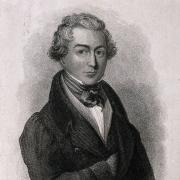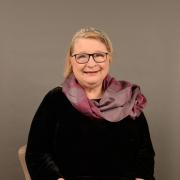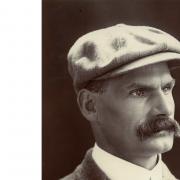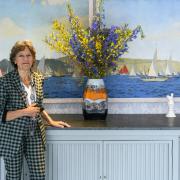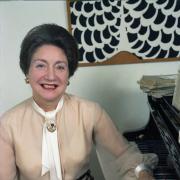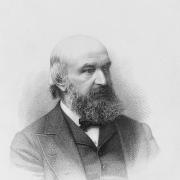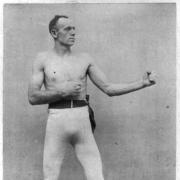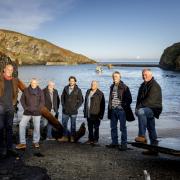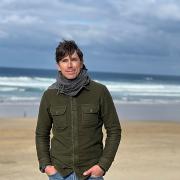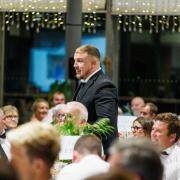Alongside the stunning coastline and enduring industries, Cornwall is also a place of invention - both creative and scientific - Stephen Roberts looks at our winners
The first Nobel Prizes were awarded 120 years ago in December 1901. Cornwall has been honoured more than once by these prestigious awards, either being bestowed on someone born in the county, or someone who had much to do with the county.
Alfred Nobel (1833-96), the Swedish chemist, inventor, engineer, businessman, manufacturer and philanthropist who was the inspiration and benefactor behind his eponymous prizes, held 355 patents, the most famous of which was for dynamite - a curio as one of Nobel’s five original prizes was for Peace (the others being Physics, Chemistry, Physiology/Medicine and Literature, a sixth for Economics was added in 1968).

Alongside its many Nobel Prize winners, Cornwall hosted the first recorded demonstration of nitro-glycerine as a blasting explosive was in Cornwall in 1865 at an exhibition hosted by The Royal Cornwall Polytechnic Society, which coincidentally had been formed around the time of Nobel’s birth to promote ideas/inventions from the Perran Foundry, owned by the Quaker Fox family (this was apparently the first use of the word ‘Polytechnic’, meaning ‘of many arts and techniques’).
Nobel took out a patent for British dynamite, a safe and manageable explosive, a couple of years later, in 1867. Nobel left more than £2 million, most of which he wanted spent on those prizes.

Guglielmo Marconi (Physics Prize, 1909)
This may not feel very Kernow having started with Sweden and now moving on to Italy, but I feel it would be remiss of me to omit the Bologna-born pioneer of long-distance radio transmission, Guglielmo Marconi (1874-1937).
He may not have been born in Cornwall, or even the UK, but grandstanded Cornwall, funnily enough in December 1901, coincidentally at the very time when the prizes were first being awarded, and would be among the early winners of the Physics prize in 1909.

He succeeded in sending signals across the Atlantic for the first time in December 1901, the signals sent from his new high-powered station at Poldhu on the Lizard and ultimately received, via relays, at Signal Hill, St John’s, Newfoundland, some 2,200 miles away.

The Poldhu Wireless Station was built on a 50-acre site that had been purchased the previous year with building work running from October 1900 to January 1901. The station closed in 1934 and was demolished in 1937, although there is a memorial plus the Marconi Centre which opened in 2001 to mark the centenary of Guglielmo’s achievement. Nearby is the Goonhilly Downs Satellite Earth Station, which had its first dish erected in 1962.

Antony Hewish (Physics Prize, 1974)
Next there’s the radio astronomer Antony Hewish (1924-2021), who was born in Fowey and became a Nobel Physics Laureate for his work on radio astrophysics.
He was honoured, aged 50, along with fellow radio astronomer Martin Ryle for his work on the discovery of pulsars, highly magnetised rotating compact stars, also dubbed neutron stars, or white dwarfs.
A graduate of Gonville and Caius, Cambridge, Hewish became Professor of radio astronomy at the Cavendish Laboratory, the Department of Physics at the University of Cambridge 1971-89. A Fellow of Churchill, Cambridge, it was one of Hewish’s PhD students, Jocelyn Bell, who actually discovered a radio source that was eventually identified as the first pulsar.
The paper announcing the discovery would contain five names, including Anthony Hewish, Ryle and Bell. When the Nobel Prize was awarded in 1974 it went to Hewish and Ryle for their joint work on radio aperture synthesis (I know, it’s complicated) and the decisive role of Hewish personally in the discovery of pulsars.
The omission of Bell from the award was a controversial one. Interestingly, Hewish had argued that science and religion do not have to be mutually exclusive but can actually be complimentary (perhaps the Magi did follow a star after all).

Peter Mitchell (Chemistry Prize, 1978)
Peter Mitchell (1920-92) was born in Surrey, a biochemist and Jesus, Cambridge graduate who scooped the 1978 Chemistry Prize for discovering ‘the chemiosmotic mechanism of ATP synthesis’. While living and working at his home near Bodmin. The prize distils down to being recognised for developing a new theory of energy generation, or biological energy transfer.
Mitchell’s association with Cornwall began in the early to mid-1960s when he oversaw the restoration of the Regency-fronted, Grade II* Listed, Glynn House, a mansion located next to the River Fowey, near Cardinham, just a few miles from Bodmin. Having bought the house, Mitchell established Glynn Research Ltd. there to undertake biological research in his own private lab. He died in Bodmin in April 1992, aged 71.

William Golding (Literature Prize, 1983)
Author William Golding (1911-93) was born in Newquay on 19 September 1911 and is the county’s sole Nobel Literature Laureate. He came into the world at 47 Mount Wise. The house, Golding’s grandparents’, was known as ‘Karenza’ in his time; Cornish for love. This is entirely apt as Cornwall was forever one of Golding’s magical places.
He loved the beaches and the sea, a childish joy that is also reflected in the early part of his magnum opus, The Lord of the Flies when the young lads find themselves stranded on a desert island, that is until things turn bad.
Golding’s childhood was punctuated by WW1 and glimpses of Allied merchant ships torpedoed by German U-boats: Horror came early as it did for his marooned lads. He’d go on to be educated at Marlborough and Oxford, becoming a teacher, which may have inspired him to write Lord of the Flies (1954) which became a successful film in 1963. It’s a hard read (or watch). Kingsley Amis called it right: ‘terrifying and haunting’.
He wrote more than a dozen novels of the symbolic, moralistic genre, including: The Inheritors (1955) about the extermination of Neanderthal; Pincher Martin (1956) where a naval destroyer is hit (Golding served in the Royal Navy during WW2); Free Fall (1959) and The Spire (1964). But he’d be most remembered for his tale of children lost in a world without rules. Golding married the intellectually-gifted Ann Brookfield in September 1939 and would be her husband for well over half-a-century. The 1980s were kind to Golding. Not only did he win the Nobel Prize, he also picked up the Booker Prize and a knighthood. He died in the county at Perranarworthal 19 June 1993, aged 81, having spent his final eight years here.
We’ve come full circle as the parish was home to the Perran Iron Foundry where the Fox family displayed the same innovative, explosive thinking as Alfred Nobel.
Cornwall’s association with Nobel continues. The occasion of the G7 in Cornwall in 2021 prompted 15 UK Nobel Prize winners to urge PM Boris Johnson to suspend intellectual property rights on Covid vaccines, the thinking being that producers around the world could then manufacture mass doses, allowing more people in middle- and low-income countries to get vaccinated, bringing an earlier end to the global pandemic.







